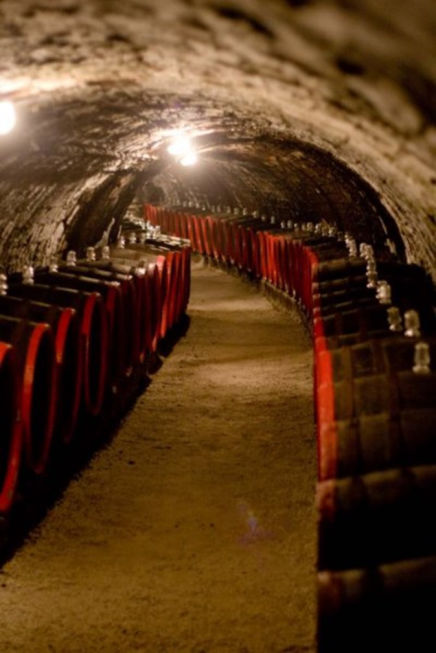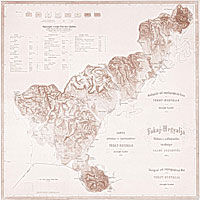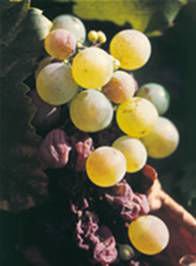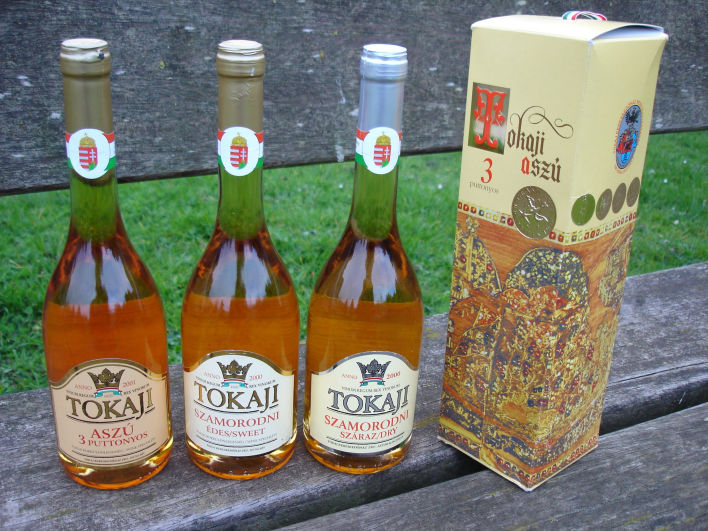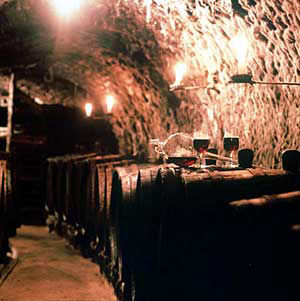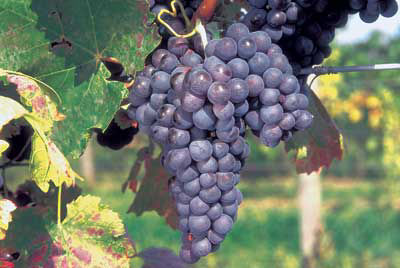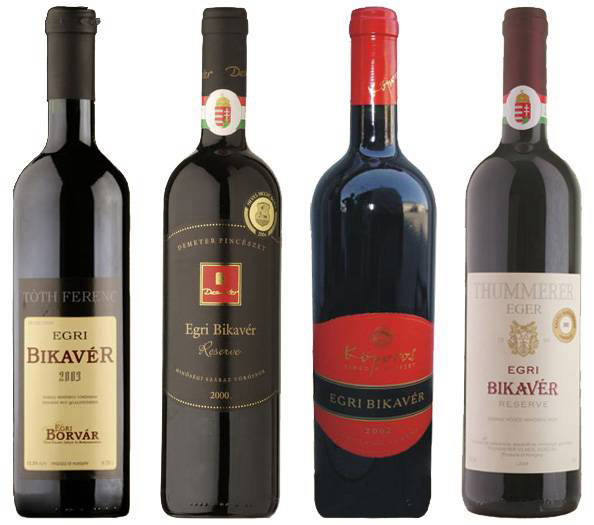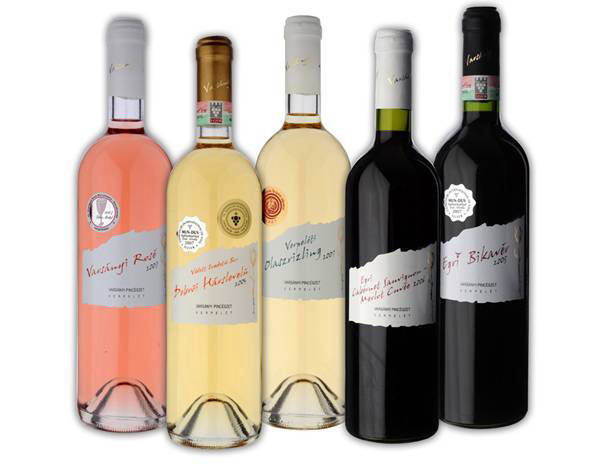The best red wines of Hungary are coming from this small wine district, situated in the southern part of
Baranya County. Villány is located at the merging point of three landscapes; the foot of the Templom Mountain, which is the eastern range of the Villány Mountains, the banks of the Karasica streamlet, and the edge of the mediterranean zone. The climate of Villány is temperate and humid. Considerable deviations between the microclimates can be found between the hills and the planes, depending on their orientation. The south slopes are 2-4 warmer than the north ones. The temperature va riation on the surface of the soil can reach 20-22 C, whereas the soil temperature 8-10 C. The annual mean temperature on the south slopes exceeds 10.5 C. The length of the frost-free pe-riod is more than 200 days. The average maximum temperature was near to 35 C, observed over several years.
Soil characteristics
The soil's characteristics play a major role in the development of the wine's character, its flavor, bouquet, and its extract content. The Szársomlyó hill, with its characteristic bare, sugarloaf-shaped peak can be deceive the visitor to the wine-district. Despite of its form, the mountain consists mainly of limestone, but it was proven over the centuries that it is a suitable soil for the grapes. The soils of the wine district consist of marl, cretaceous limestone, covered by clay or some places by sand. The local grapes grow in extremely heavy, but water retaining soil.
The most famous vineyards
On the slopes of Villány Mountain, a great many of the grape-growing sites were given German names.
Swabian immigrant winegrowers named the sites either after their form, external characteristics, or after the legends and or historical events that were related to the various places.
Jammertal means "Valley of tears". This famous production place was probably named after the battle of Szársomlyó in 1687. The legend has it that, after the victory of the Kaiser's troops, the wailing voices of wounded Turks could have been heard for weeks.
Csillagvölgy (Sterntal) means "Star valley". The name probably refers to the clean environment. This is
the first production site along the route as one leaves Villány to the west.
Remete dűlő means "Recluse site". This is the grape growing place on the eastern part of Star Valley. There are many small plots of grape vines on steep slopes
Ördögárok (Teufelsgraben) means "Devils Trench." It possibly refers to a legend of Nagyharsány, according to which, the trench was ploughed by the devil itself.
Kopár dűlő means "Bare site," which is the westernmost site of the Villány region. It is completely protected from the north; it is an ideal growing site for its ideal climate. The spring budding occurs two weeks earlier than in any other ideally located wineries of the country.
History
As demonstrated by evidence of finds from the Bronze Age, Villány was inhabited as early as in the Prehistoric times. The origin of grape cultivation presumably dates back to the Celts and unquestionably to the Romans. The inscription on a Roman-era altar stone discovered in the hillside of Szársomlyó documents 50 hectares of vine stock plantings.
Upon the settlement of the Magyars in the Carpathian Basin, the clans of Kán, Kalán and Bor put down their roots in the area which is believed to have later become royal domain. Following the devastation by the Tartar hordes, winegrowing was centered around the forts and castles in Hungary (with Siklós and Szársomlyó being such strongholds in this area). In 1247, in his deed of foundation of the Szársomlyó Castle, King Béla IV made mention of the vineyards on the outskirts of Harsány.
Under the Turks' rule, while Villány suffered total destruction, winegrowing itself came to no halt and villagers from its vicinity kept up some of the vineyards of Villány. At the time of the Mohács Disaster, the region was in the possession of Perényi Péter. The Turks relocated Slav; to be exact, Serb settlers into the destroyed Hungarian villages who introduced the Kadarka variety and the technique of making red wine by the fermentation on the skin. After the victorious battle of Nagyharsány in 1687, further
Serb settlers were moved into the area. Damaged vineyards were promptly restored, moreover expanded.
From the end of the 18th century on, the area, having suffered a decrease in inhabitants during the Turkish occupation, was constantly and systematically repopulated, primarily with Germans, which resulted in significant changes in the local winegrowing techniques, including the introduction of the "Portugieser" varietal. Strips of cellars were put up near the villages. Small wine-press houses were now combined with short, rarely divided, rather depthless cellars where the wagonloads of harvest were transported to in large barrels to be processed and fermented Villány's wines had earned a growing reputation and become a valuable export product. Local vineyards suffered greatly from the phylloxera.
Traditionally, the Kadarka, Kékoprtó and Kékfrankos (Blaufrankisch) varieties are common to the area. Following the phylloxera pest, French varietals such as Cabernet Franc, Cabernet Sauvignon and Merlot were also planted. Red wine grape varieties dominate Villány and its environs, whereas whites are characteristic of Siklós and the surrounding areas.
The region totals 1 ,601 hectares .
